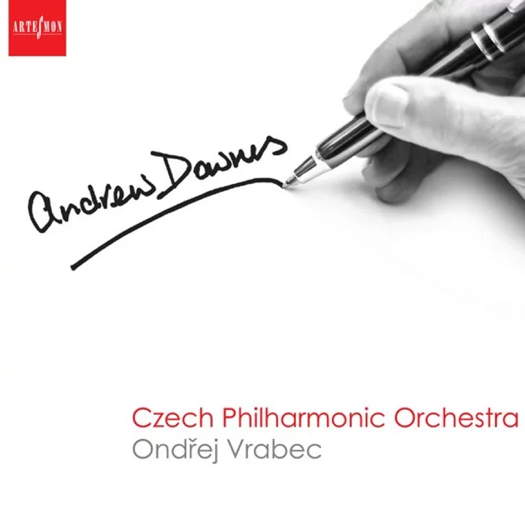 SPONSORED: CD Spotlight. On Buoyant Form - Orchestral music by Andrew Downes, heard by Roderic Dunnett.
SPONSORED: CD Spotlight. On Buoyant Form - Orchestral music by Andrew Downes, heard by Roderic Dunnett.
All sponsored features >>
A Marvelous Concert in an Exceptional Setting
RON BIERMAN reports on Mozart from the San Diego Symphony and Raphael Payare
What is a reviewer seeking fame and fortune to do? Snarky reviews sell newspapers and blogs. Things like, 'I envy people who weren't there'; 'I want to dig the composer up and hit him over the skull with his own shinbone'; or 'what did I think of the conductor's execution? I'm all for it!'
So, unless I use a politician's talent for lying, how do I get people to read this one?
The San Diego Symphony was at a little more than half its usual size, but with a near full complement of strings, and Raphael Payare conducted with great feeling and passion. (A friend commented at intermission, 'I thought he was on a trampoline'.)

Raphael Payare. Photo © Gerard Collett
The result was unusually satisfying versions of three Mozart symphonies. The orchestra responded to Payare with as near perfect execution as you are likely to hear in a live performance, and the Conrad has spectacularly good acoustics for the near chamber-orchestra size group Payare led.
Oh, and the three symphonies were a fascinating demonstration of how Mozart's genius developed as he went from a teenager to early middle age.

An unfinished portrait of Mozart by his
brother-in-law, Joseph Lange (1751-1831)
He wrote his 29th when he was eighteen and yet to escape the influence of his father and other 'galant style' composers, composers who wrote to appeal to the widest possible audience with readily appreciated melodies, harmonies and harmonic progressions. Orchestrations seldom included more than strings and a few other instruments. Mozart added two oboes, and two horns for his 29th, a thoroughly charming work.
A catchy tune opens the first movement, which is in sonata form. The second theme is a soft lilting contrast, and the opening repeats after a brief development section.
An Andante follows, as expected. Critic Edward Downes described it as:
... full of eighteenth-century clichés and turns that were used a hundred times before ... but here they are so spontaneous and lovely.

The first system of the Andante from Breitkopf & Härtel's 1880 score of Mozart's Symphony No 29
The third movement is, again as expected, a minuet, but one that gives further hints the galant style won't constrain the composer much longer.
The final movement recalls the first with an octave drop in the first theme, but the mood is even more carefree, elegant and cheerful to the closing notes with prominent hunting calls and a weightier and farther ranging development. As fresh and appealing as the 29th is, far greater beauty, depth and excitement were soon to come.
Mozart went well beyond the galant in his mid-twenties. The 'Haffner' symphony, his 35th, adds two clarinets, two bassoons, two trumpets and timpani to the 29th. The opening movement announces a more serious intent than simple pleasing elegance. It is forceful with unexpected leaps and less obvious harmonic development. The lovely Andante returns to elegance, while the final minuet and dazzling finale point to the future of classical music.
Mozart's 40th symphony, written in his early thirties, is fully in the classical era, even seeming to pre-echo Beethoven, and beyond. Often called 'The Great G minor', it is one of only two Mozart symphonies in a minor key. Although his personal life rarely seemed to affect what he was writing, it may have this time. Audiences were dwindling, bills went unpaid, and an infant daughter had recently died. His mood was further affected by the Sturm und Drang (storm and stress) movement in German literature and music from the late 1760s to early 1780s. Haydn was a friend and tutor, and his Trauer (Mourning) and 'Farewell' Symphonies have become known as Sturm und Drang works.
Whatever its backstory, the 40th is Mozart in his blazing glory, and Payare and the orchestra did it full justice.

Raphael Payare and the San Diego Symphony at the Mozart concert in La Jolla. Photo © 2024 Ron Bierman
I have little sympathy for the original instruments movement, but do feel that Galant, and certainly older Baroque style compositions are more effective with the smaller orchestras and faster tempos of those eras. Payare appears to agree on size and tempos. Although there were at least a dozen more strings than Mozart is likely to have expected, it didn't matter. The sound was delicately delicious in the softest passages, and the violins played as though a single instrument, responding beautifully to Payare's well-judged changes in dynamics.
A marvelous concert in an exceptional setting.
Copyright © 31 January 2024
Ron Bierman,
San Diego, USA




